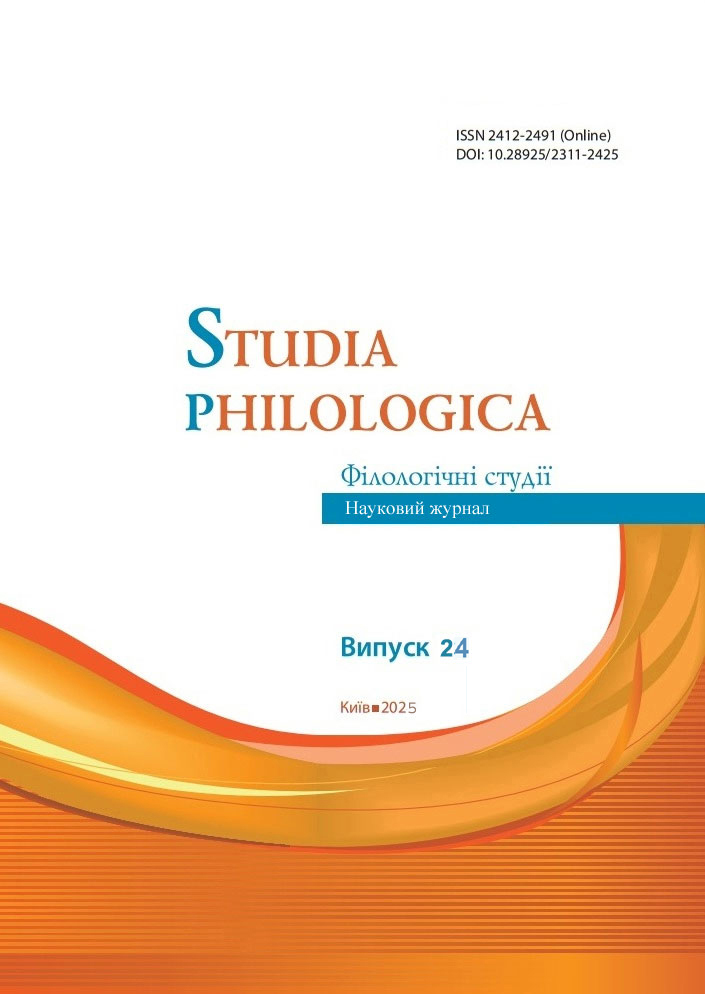Multilingual Car Stickers with Text: Linguopragmatic and Legal Perspectives
DOI:
https://doi.org/10.28925/2311-2425.2025.241Keywords:
sticker, communication, pragmatics, intention, linguistic creative activity, nomination, textAbstract
The paper is devoted to a linguistic analysis of stickers with verbal signs, purposefully applied to different parts of cars to distinguish them from other vehicles. Stickers on a car are a design solution by individuals and legal entities to make it unique and original. The stickers were classified based on the global pragmatic goals of the addressees of such communicative messages to the social world: compliance with the law, promotion of goods and/or services, and personal free expression. Accordingly, they can be classified as formal, or official, informal, or decorative types of stickers. The verbal signs are a direct incentive for the addressee to come into contact with the inscription made by the addressee and react (think, feel, act) in a certain way. In this way, one more fragment of the ethnic communicative space of Ukrainian society is created. The paper shows that while compliance with the law involves the use of standardised stickers, advertising and self-expression are characterised by more or less free linguistic creativity. If the promotion of a product or service is aimed at satisfying social needs for the sake of survival, financial success, self-affirmation, etc., the need for decorative verbal markings of a car is due to the existing needs for self-expression, respect, belonging to a certain community, etc. Verbal labels are nominative (words, abbreviations, shortenings) and communicative (phrases, sentences, small texts) signs in Germanic, Slavic and Latin, displayed in different colours, fonts and sizes on the car glass or body. In this way, the main communicative signal is reinforced, namely the idea of why this or that sticker was created. In terms of pragmatics, the identified intentions (the list of which is far from being exhaustive), realising the Ego of individuals, actually reveal different aspects of their personalities – people express their attitude to many fragments of this multifaceted world through the corresponding stickers. One of the main intentions is to express their negative attitude to the war, love for their Motherland, and the vision of Ukraine in Europe.
Downloads
References
Artlait. Brenduvannia avto. Retrieved January 8, 2025, from https://art-light.com.ua/brenduvannya-transportu?srsltid. (in Ukrainian)
Betsenko, T. P. (2019). Vstup do toponimiky. SDPU im. A. S. Makarenka, 2019. (in Ukrainian)
Borysov, O. O. (2024). Imenni nomerni znaky transportnykh zasobiv u sotsiokulturnomu ta komunikatyvnomu zrizakh. U V. F. Puzyrnyi (Holov. red.), Intehratsiia teorii u praktyku: problemy, poshuky, perspektyvy v umovakh yevrointehratsiinykh protsesiv: Mizhnarodna naukovo-praktychna konferentsiia (Ss. 365–370). (in Ukrainian)
Borysov, O. O., Vasylieva, O. H. (2024). Indyvidualni nomerni znaky transportnykh zasobiv u komunikatyvno-kohnityvnii perspektyvi. STUDIA PHILOLOGICA. Svity, znaky ta kontsepty, 2(23), 20–32. https://doi.org/10.28925/2311-2425.2024.232. (in Ukrainian)
Buniiatova, I. R. (2000). Rozvynuta syntaksychna systema yak rezultat rozvynutoho myslennia. Naukovi zapysky. Filolohichni nauky (movoznavstvo), 22(1), 77–89. (in Ukrainian)
Varii, M. Y. (2009). Zahalna psykholohiia. Tsentr uchbovoi literatury. (in Ukrainian)
Vozna, M. O., Slavova, L. L., Antoniuk, N. M. (2024). Vidtvorennia onimnoho prostoru Davnoi Rusi v anhlomovnykh akademichnykh tekstakh. Visnyk Zhytomyrskoho derzhavnoho universytetu imeni Ivana Franka. Filolohichni nauky, 103, 53–70. (in Ukrainian)
Zakon Ukrainy "Pro dorozhnii rukh" (1993). Retrieved January 8, 2025, from https://zakon.rada.gov.ua/laws/main/3353-12#Text. (in Ukrainian)
Zakon Ukrainy "Pro reklamu" (1996). Retrieved January 9, 2025, from https://zakon.rada.gov.ua/laws/show/270/96-%D0%B2%D1%80#Text. (in Ukrainian)
Kornielaieva, Ye. V. (2019). Linhvistychna pryroda evfemizmiv. Naukovyi zhurnal Lvivskoho derzhavnoho universytetu bezpeky zhyttiediialnosti «Lvivskyi filolohichnyi chasopys», 5, 70–75. (in Ukrainian)
Letiucha, L. P. (2019). Erhonimichnyi prostir Pereiaslav-Khmelnytskoho: leksyko-semantychnyi analiz. V K. I. Mizin (Hol. red.), Liudyno- y kulturoznavchi priorytety suchasnoho movoznavstva: napriamy, tendentsii ta mizhdystsyplinarna metodolohiia (Ss. 232–243). PP Shcherbatykh O. V.. (in Ukrainian)
Promoekspres. Brenduvannia avto. Retrieved January 8, 2025, from https://promoexpress.com.ua/ (in Ukrainian)
Pushkar, O. I. (2013). Hrafichni zasoby vyrazhennia evfemii / dysfemii. Naukovyi chasopys NPU imeni M. P. Drahomanova. Seriia 10: Problemy hramatyky i leksykolohii ukrainskoi movy, 10, 119–121. (in Ukrainian)
Slavova, L. L., Vozna, M. O. (2022). Etnokulturna spetsyfika istorychnoi terminolohii: zistavnyi ta perekladoznavchyi aspekty (na materiali istorychnykh terminiv antychnosti ta davnoruskoho periodu). Movni i kontseptualni kartyny svitu, 1, 115–131. (in Ukrainian)
Yurydychnyi dovidnyk onlain. Reklama na avto. Z kym potribno pohodzhuvaty? Retrieved January 9, 2025, from https://legalsos.com.ua/avtopravo/reklama-na-avto-z-kym-pohodzhuvaty.html. (in Ukrainian)
Auto 24. Nakleiky na avto: yaki mozhna, yaki ne mozhna i kudy kleity. Retrieved January 9, 2025, from https://auto.24tv.ua/nakleiky_na_avto_yaki_mozhna_yaki_ne_mozhnai_kudy_kleity_n43448. (in Ukrainian)
Lakor. Brenduvannia avto. Retrieved January 9, 2025, from https://lakor.com.ua/nashi-poslugy/ shyrokoformatnyj-druk/brenduvannya-avto/. (in Ukrainian)
Vodiy.ua. Pravyla dorozhnoho rukhu 2025. Retrieved January 10, 2025, from https://vodiy.ua/pdr/. (in Ukrainian)
Published
How to Cite
Issue
Section
License
Copyright (c) 2025 CC BY 4.0 DEED Attribution 4.0 International

This work is licensed under a Creative Commons Attribution 4.0 International License.


